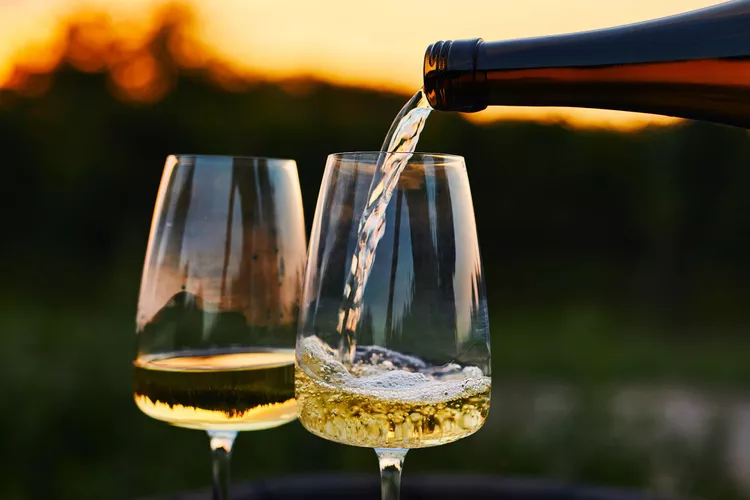Chardonnay produces some of the world’s most popular white wine styles, ranging from oaky and rich to crisp and mouthwatering.
Chardonnay has become synonymous with white wines for many consumers. Chardonnay is a versatile wine that can be enjoyed in many different ways.
Chardonnay is a popular grape, but its popularity comes at a cost. It’s easy to forget how good it can be. Check out the Chardonnay Wine Guide below to fully appreciate what this grape can do.
What is Chardonnay Wine?
Chardonnay grapes are widely planted in many countries. It can express the land where it was grown and show the winemaker’s style. Chardonnay is a great chameleon. It can range from crisp and refreshing to velvety and generous. Even Champagne is made from Chardonnay. Chardonnay is available in a variety of styles to suit any taste.
Where does Chardonnay wine come from?
Since the middle of the last millennium, Chardonnay grapes have been grown in France’s Burgundy area. Most wine experts agree that the best wines are produced in Cote de Beaune, located in the southern part of the famed Cote d’Or. Grand Cru vineyards such as Montrachet and Corton-Charlemagne grow Chardonnay grapes which are then crafted into wines that can age for many decades. The Chardonnays of Chablis, located further north in Burgundy, are made in a different style. They have a strong focus on acidity and chalky minerality. Chardonnays from the Cote Chalonnaise and the Maconnais are often excellent values you won’t find anywhere else in Burgundy.
Chardonnay, Pinot Noir, and Pinot Meunier are the three grape varieties allowed in Champagne. Blanc de Blancs Champagne is made from pure Chardonnay. Chardonnay is often produced in richer styles, with oak, butteriness, and malolactic fermentation. Washington State, Oregon, Argentina, Chile, Australia, New Zealand, and elsewhere have a variety of Chardonnay styles. Chardonnay grapes are a global variety.
Why should you drink Chardonnay wine?
Chardonnay is one of the few grapes that can be produced in such a wide range of styles. Its acidity is enhanced when grown in cooler climates or picked early. Chardonnay can take on a decadent taste if planted in warmer temperatures or ripened for extended periods. Depending on the style, it can be refreshing during the summer or comforting when the weather gets cooler.
It pairs beautifully with food. Chardonnays with more acidity, such as those from Chablis, are perfect for seafood and fish. Raw oysters, sauteed Shrimp, and white fish, in general, are all excellent partners. Chardonnays with higher alcohol content can withstand heavier dishes and go well with veal, cheeses, and other meats. Lemon is also a good match, whether squeezed over pasta and garlic with olive oil or made into an aioli. Chardonnay pairs well with mac and cheese.
Chardonnay, of course, is one the best white wines for drinking on its own. Consumers often debate Sauvignon Blanc and Chardonnay. The answer is simple: Sauvignon Blanc has more bell pepper and grapefruit aromas, while Chardonnay tends to have more melon, autumn orchard, and tropical fruits. Chardonnay is also less acidic than Sauvignon Blanc. It depends on what you are in the mood for.
No matter how much you spend, there will be a Chardonnay that is perfect for you, whether it’s on a restaurant’s wine list or on a store shelf. Grand Crus of Burgundy are expensive and can cost over $1000. However, there are many delicious options that you can find for less than $20.
What does Chardonnay taste like?
Chardonnay has a fruity aroma often described as reminiscent of melon and orchard fruits like apples and pears. It usually takes on a subtle saltiness and hints of chalk when grown in soils richer in calcium. Chardonnays from warmer climates are more likely to have tropical fruit flavors like pineapple, papaya, and mango. Oak-influenced Chardonnays are characterized by cinnamon, vanilla, clove, and other aromas. If it has undergone malolactic fermentation, the butter will likely be detected. Chardonnay is a wine that has it all.
Five Great Chardonnay Wines
Chardonnay is available in a wide variety of styles. The five producers listed alphabetically are the perfect place to begin exploring what Chardonnay can offer.
Alain et Adrien Gautherin Chablis Grande Cru
The 14th generation Gautherin makes excellent expressions of Vaudesir, Le Clos, and other Grand Crus. Chardonnay in Chablis is delicious either way.
Louis Latour Pouilly Fuisse
Louis Latour has produced wine in Burgundy, France, since 1797. Their portfolio includes Grand Crus and more affordable expressions. This wine is from the latter group and has flavors of ripe fruits balanced with a hint of nuttiness. It costs less than $30.
Perrier-Jouet Blanc de Blancs Champagne
This standout Champagne is one of the most classic examples of Blanc de Blancs. It’s a favorite on wine lists around the globe and in cellars.
Rombauer Chardonnay
Rombauer is often the first wine that comes to mind when Chardonnay fans think of a classic style.
Sonoma-Cutrer Chardonnay
Sonoma-Cutrer makes a variety of Chardonnays, including Russian River Ranches and Les Pierres.

